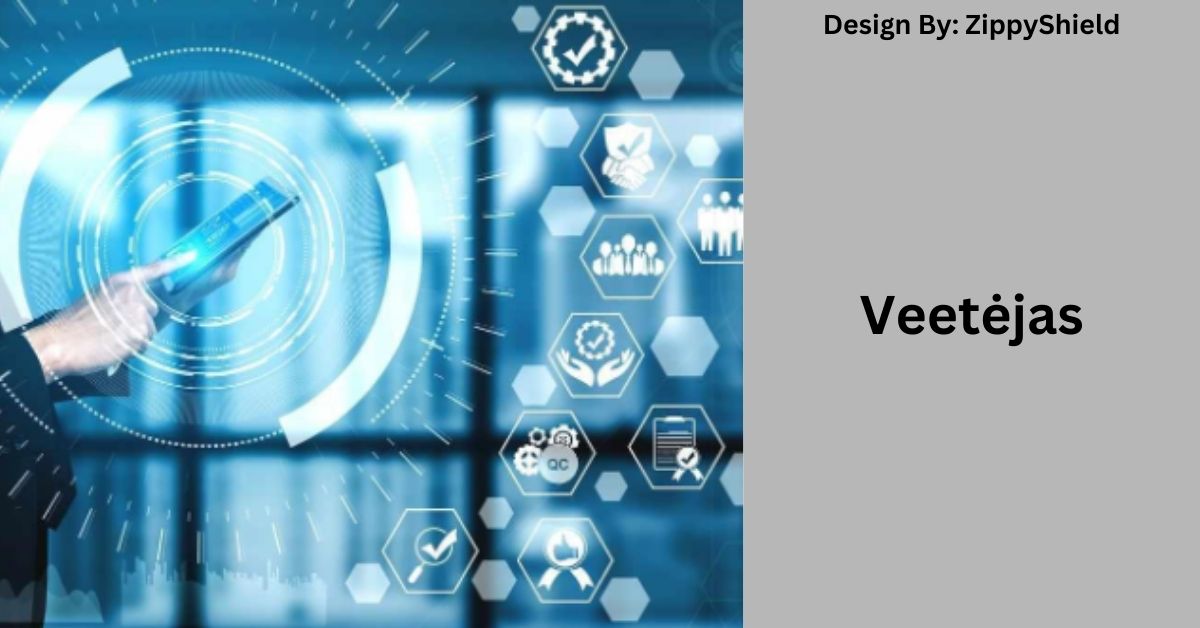Introduction:
In today’s interconnected world, the demand for efficient and accurate translation solutions has never been higher. Businesses, educational institutions, healthcare providers, and governmental organizations alike are increasingly reliant on advanced translation technologies to facilitate seamless communication across languages.
Among these technologies, Käätjä stands out as a leader in harnessing artificial intelligence (AI) to revolutionize the translation landscape.
This article explores Käätjä’s evolution, applications, benefits, challenges, regulatory landscape, and future trends, highlighting its transformative impact across various sectors globally.
Understanding Käätjä:

Käätjä represents a significant advancement in translation technology, employing state-of-the-art algorithms and machine learning techniques to deliver rapid and precise translations.
Unlike traditional methods that often rely on rule-based systems or human translators, Käätjä leverages AI to continuously learn from vast datasets and improve its accuracy over time.
This dynamic adaptation enables Käätjä to interpret context, idiomatic expressions, and cultural nuances with remarkable fidelity, making it a cornerstone of effective cross-cultural communication.
What is Käätjä?
At its core, Käätjä is an AI-powered translation tool designed to facilitate seamless communication across languages. Developed to address the complexities of global communication, Käätjä translates text efficiently while preserving the integrity and nuances of the original language.
By analyzing extensive linguistic data and utilizing sophisticated algorithms, Käätjä offers users an intuitive and reliable platform for multilingual communication, significantly reducing language barriers in today’s interconnected world.
The Evolution of Translation Technology:
The evolution of translation technology has been marked by significant milestones, from early rule-based systems to the advent of statistical machine translation and, more recently, neural machine translation (NMT).
Käätjä represents the culmination of these advancements, integrating deep learning models and neural networks to achieve unprecedented levels of translation accuracy and natural language understanding.
This evolutionary journey underscores Käätjä’s role as a catalyst for innovation in global communication strategies.
Read: Bblog.uk – Essential Tips & Tools!
Key Components of Käätjä:
Käätjä integrates several essential components to deliver robust translation capabilities:
- Natural Language Processing (NLP): Enables Käätjä to understand and interpret the nuances of human language, including syntax, semantics, and pragmatics.
- Machine Learning Algorithms: Continuously improve translation quality based on feedback and user interactions, enhancing accuracy and relevance.
- Cloud Computing Infrastructure: Supports real-time translation services and scalability, ensuring seamless integration across platforms and devices.
Applications of Käätjä:
Käätjä’s versatility extends across various sectors, where its advanced capabilities streamline operations and enhance productivity:
- Healthcare: Facilitates multilingual patient care, medical research collaboration, and the translation of critical health-related documents, ensuring accuracy and accessibility.
- Education: Supports language learning programs, international student exchanges, and academic research by providing instant translations of lectures, research papers, and educational materials.
- Business: Enhances global business communication, enabling companies to engage with international partners, customers, and stakeholders effectively. Käätjä’s ability to translate business documents, marketing content, and customer communications in real-time fosters cross-border collaboration and market expansion.
Käätjä in the USA:

In the United States, Käätjä has gained significant traction across industries seeking to enhance their global competitiveness and operational efficiency. From multinational corporations to educational institutions and healthcare facilities, organizations in the USA leverage Käätjä’s advanced translation capabilities to navigate linguistic diversity and expand their reach in domestic and international markets.
Its intuitive interface, coupled with robust performance and compliance with data protection regulations, positions Käätjä as a preferred choice for enterprises aiming to capitalize on global opportunities without language barriers.
Adoption and Market Penetration:
The widespread adoption of Käätjä reflects its proven ability to optimize processes, improve communication efficacy, and reduce translation costs. Organizations that integrate Käätjä into their workflows benefit from enhanced productivity, accelerated decision-making, and seamless cross-cultural collaboration. Case studies illustrate Käätjä’s transformative impact across various sectors:
Case Studies:
Healthcare:
- Enhanced Patient Care: Hospitals and healthcare providers utilize Käätjä to communicate with diverse patient populations, ensuring accurate diagnosis, treatment, and informed consent processes.
- Medical Research Collaboration: Research institutions leverage Käätjä to translate medical literature, research findings, and clinical trial documentation, facilitating international collaboration and knowledge sharing.
Education:
- Global Learning Environment: Universities and educational institutions integrate Käätjä into their curricula to support international student enrollment, language instruction, and cross-cultural learning experiences.
- Research Collaboration: Käätjä enables seamless translation of academic papers, conference presentations, and research proposals, fostering global research partnerships and academic exchanges.
Regulatory Landscape:
While Käätjä offers substantial benefits in terms of efficiency and accessibility, its deployment must navigate regulatory frameworks governing data privacy, security, and compliance with industry standards.
Organizations utilizing Käätjä for sensitive information must implement robust encryption protocols, data anonymization techniques, and secure cloud infrastructure to safeguard user confidentiality and adhere to international data protection regulations.
Benefits of Käätjä:
Efficiency and Cost Savings:
Käätjä streamlines translation workflows, reducing the time and resources traditionally required for multilingual communication. By automating repetitive tasks and optimizing document translation processes, Käätjä enables organizations to allocate resources more strategically, enhancing operational efficiency and scalability.
Read: ://Redandwhitemagz.com – Your Gateway to Success!
Enhanced Data Management:
Central to Käätjä’s functionality is its ability to improve data integrity, accessibility, and usability. By facilitating seamless integration with existing information systems and databases, Käätjä enhances data management practices, ensuring consistency and accuracy across translated content.
This capability is particularly beneficial in industries requiring precise documentation, compliance reporting, and global content distribution.
Competitive Advantage:
Businesses adopting Käätjä gain a competitive edge by accelerating time-to-market, expanding market reach, and fostering customer engagement across linguistic boundaries.
Käätjä’s ability to deliver localized content, personalized communications, and culturally relevant marketing materials enhances brand visibility and customer loyalty in diverse global markets.
Challenges and Limitations:

Despite its advancements, Käätjä faces several challenges that require ongoing innovation and strategic adaptation:
Technical Challenges:
Achieving universal translation accuracy remains a complex endeavor, as languages evolve, cultural contexts vary, and linguistic nuances defy straightforward interpretation.
Käätjä continues to refine its algorithms and machine learning models to improve translation quality and address language-specific challenges effectively.
Privacy and Security Concerns:
The translation of sensitive information raises significant privacy and security concerns, necessitating robust encryption protocols, data anonymization techniques, and secure data storage solutions.
Organizations leveraging Käätjä must prioritize user confidentiality, regulatory compliance, and proactive risk management strategies to mitigate data breaches and unauthorized access.
Scalability Issues:
Managing large volumes of simultaneous translation requests and scaling resources to meet growing demand present scalability challenges for Käätjä. Cloud computing infrastructure enhancements, load balancing techniques, and predictive analytics are essential to optimize performance, ensure system reliability, and support seamless user experiences across global markets.
Future Trends and Innovations:
Looking ahead, Käätjä is poised to capitalize on emerging technologies and industry trends that promise to redefine global communication strategies:
Emerging Technologies:
Advancements in AI, including deep learning and neural machine translation (NMT), will further enhance Käätjä’s translation accuracy, language fluency, and natural language understanding capabilities.
By integrating AI-driven predictive analytics and real-time language processing, Käätjä will enable more sophisticated translation services, personalized user experiences, and adaptive learning algorithms.
Predictions for the Next Decade:
The future of Käätjä will witness enhanced integration with augmented reality (AR), virtual reality (VR), and mixed reality (MR) platforms, revolutionizing real-time language translation in immersive environments.
By overlaying translated text, subtitles, and interactive language tutorials onto AR/VR content, Käätjä will facilitate cross-cultural communication, language learning, and interactive storytelling experiences on a global scale.
Societal Impacts and Ethical Considerations:
As Käätjä becomes increasingly pervasive, addressing biases in AI algorithms, ensuring equitable access to translation services, and promoting cultural sensitivity will be paramount.
By fostering inclusivity, promoting digital literacy, and advocating for ethical AI practices, stakeholders can mitigate potential risks, enhance user trust, and promote responsible deployment of AI-powered technologies like Käätjä.
FAQ’s:
1. Is Käätjä suitable for translating technical documents?
Yes, Käätjä excels in translating technical jargon accurately, enhancing document readability and accessibility for diverse global audiences.
2. How does Käätjä ensure data privacy and security?
Käätjä employs robust encryption protocols, data anonymization techniques, and secure cloud infrastructure to safeguard user confidentiality and comply with international data protection regulations.
3. What languages does Käätjä support?
Käätjä supports a wide array of languages, including major global languages and regional dialects, continuously expanding its linguistic capabilities through ongoing research and development efforts.
4. How can Käätjä benefit businesses?
Käätjä enhances global business communication by enabling real-time translation of documents, marketing content, and customer communications, fostering cross-border collaboration and market expansion.
5. What are the key challenges Käätjä faces?
Käätjä encounters challenges such as achieving universal translation accuracy, addressing privacy concerns, scaling to meet demand, and integrating emerging AI technologies effectively.
Conclusion:
Käätjä is at the forefront of revolutionizing translation technology, leveraging AI to break down language barriers and enable seamless global communication. Its advanced capabilities not only enhance efficiency and cost-effectiveness but also foster cross-cultural collaboration across diverse sectors. As Käätjä continues to evolve, its transformative impact on global communication strategies promises to redefine how organizations navigate linguistic diversity in the digital age.
Read More:



